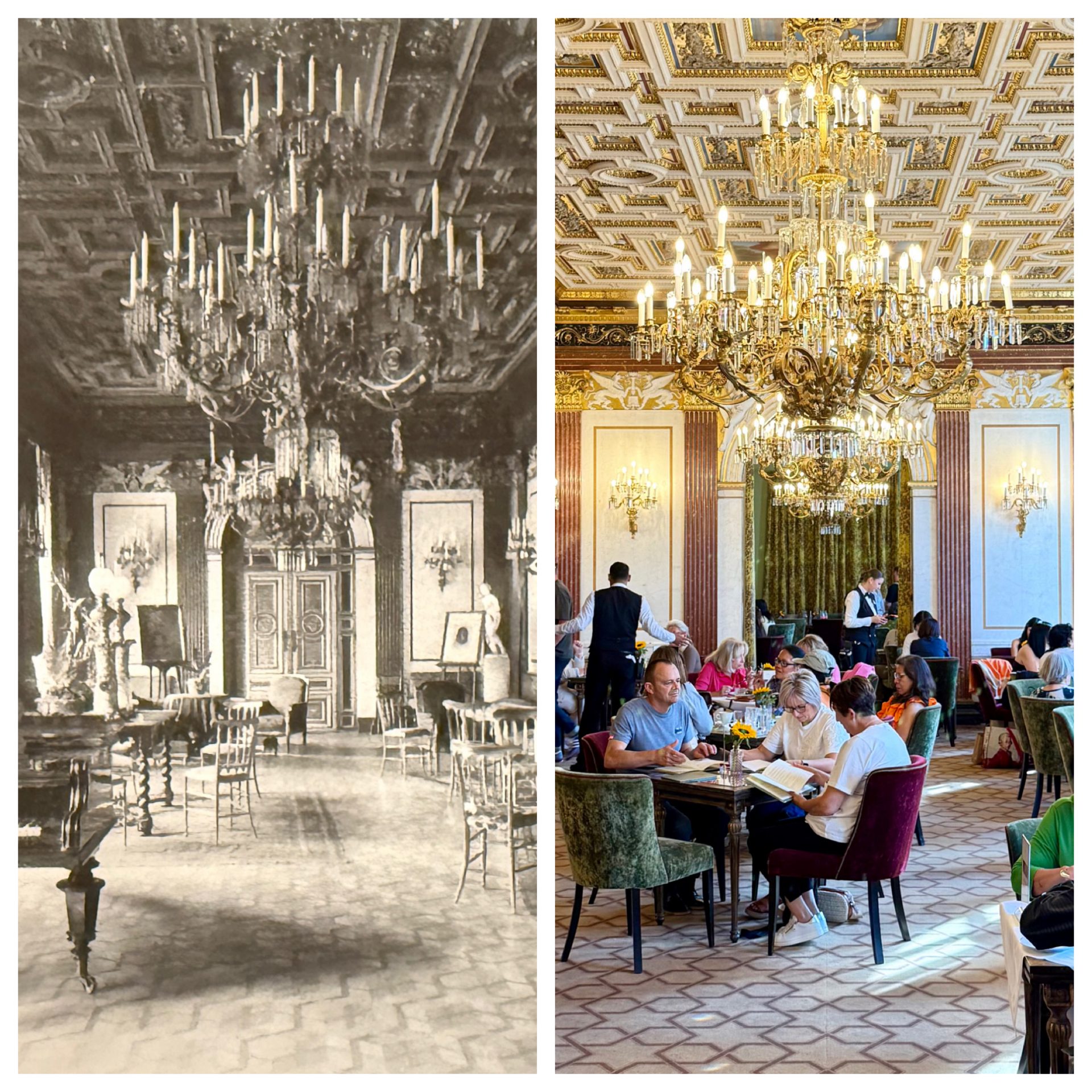Experience Travel Insights
Beyond the Waltz: Inside the Vienna Salons – Places of Emancipation that Forged Modernity
by Long Lin-Maurer • September 26, 2025

The Drawing Rooms of the Mind: Vienna Salons as Places of Emancipation and Engines of Modernity
Vienna, a city often synonymous with imperial grandeur, waltzing couples, and the gilded echoes of the Habsburg dynasty, holds a more subtle and profound history within the walls of its grand apartments. Beyond the public splendor of the Hofburg Palace and the Vienna State Opera, a revolutionary world of ideas, art, and social change was being forged in the intimate settings of the city’s private Viennese gatherings. These were not mere social events; they were intellectual crucibles and some of the most important cultural hubs of Vienna. More than anything, the Vienna Salons were places of emancipation, particularly for the city’s assimilated Jewish bourgeoisie.
Come and experience travel!
Personally designed, seamlessly delivered – your journey, our expertise!
We are a boutique travel agency and consultancy specializing in Hub & Spoke Tours across Central Europe, the Benelux and the Dolomites.
To understand Vienna at the turn of the 19th and 20th centuries is to understand a society of dazzling contradictions. It was a cosmopolitan metropolis, yet it was also a city governed by a strict and ancient court protocol where birthright and religion dictated one’s place. For the newly affluent and highly educated Jewish families—bankers, industrialists, and doctors instrumental to the empire’s vitality—the highest echelons of court society remained stubbornly inaccessible. In response, they created their own realms of freedom: the courts of the mind. The Viennese salon became their stage, an arena of self-realization where wit, intellect, and artistic patronage superseded noble lineage.
The Rise of the Salonnière: Hostesses Creating Spaces of Empowerment
The tradition began in the late 18th century, modeled after Parisian precedents but quickly acquiring a uniquely Viennese flavor. At the heart of each successful salon was the Salonnière, the hostess, a woman of formidable intellect and social grace. Figures like Fanny von Arnstein and Cecile von Eskeles, wives of prominent Jewish court bankers, established the first great Viennese drawing rooms. In their homes, enlightened aristocrats mingled with poets, foreign diplomats conversed with composers, and the barriers that defined public life were elegantly, if temporarily, set aside.
Fanny von Arnstein’s salon was a beacon of Enlightenment thought. She is credited with introducing the German custom of the Christmas tree to Vienna, a symbol of her family’s deep integration into the city’s cultural fabric. Her gatherings were legendary, attracting luminaries who shaped the post-Napoleonic world. In this carefully curated private sphere, a Jewish woman could wield significant cultural and even political influence, shaping opinions and forging alliances in a way impossible in formal, male-dominated institutions. The salon was a forum for independence where she was not merely a subject, but the sovereign of her own intellectual realm.
A Crucible of Ideas: Cultural Patronage and the Intellectual Life in Vienna
What transpired within these velvet-draped rooms was a dynamic exchange that fueled Vienna’s cultural engine. This was the heart of the intellectual life in Vienna, where a young Ludwig van Beethoven might have informally tried out a new sonata, where the playwright Franz Grillparzer could debate aesthetics, and where the latest ideas from across Europe were discussed. The salon operated as a meritocracy of talent. A brilliant idea or a moving piece of music was the currency of entry, valued far more than a centuries-old family name.
This environment fostered a unique symbiosis between Jewish patrons and non-Jewish artists. The Jewish bourgeoisie, possessed of both wealth and a deep reverence for German culture (Bildung), engaged in extensive cultural patronage. They funded musicians, commissioned artists, and supported writers, not for social prestige, but out of a genuine passion for creative pursuits. These intellectual circles in Vienna were the primary venues where this support was enacted, creating a network that allowed Vienna’s creative genius to flourish. It was a space where identity was fluid; one was an interlocutor in a grand conversation.
The Golden Age: Fin-de-Siècle Brilliance in Vienna’s Cultural Hubs
If the early 19th century was the salon’s formative period, the fin-de-siècle—the turn-of-the-century Vienna—was its incandescent golden age. As the grand buildings of the Ringstrasse rose, a new generation of Salonnières presided over the birth of Viennese Modernism. The most influential of these was arguably Berta Zuckerkandl, a journalist whose salon was the unofficial headquarters of the artistic avant-garde.
Come and experience travel!
We design bespoke travel experiences with a perfect balance of cultural depth, efficiency and comfort.
Specializing in seamless hub-and-spoke journeys, we create well-paced, immersive itineraries tailored to your interests.
In Zuckerkandl’s home, the rebellion against the stuffy historicism of the establishment was planned. It was here that Gustav Klimt, Josef Hoffmann, and the other founders of the Vienna Secession movement gathered, formulating the ideas that would revolutionize art and design. Zuckerkandl was their champion, using her journalistic influence to promote their radical new vision. Her salon was a nexus connecting all facets of Viennese Modernism. One might find the composer Gustav Mahler in deep conversation with the architect Josef Hoffmann, while the writer Arthur Schnitzler observed the intricate social dynamics that would later populate his plays. The salon was the connective tissue of this explosive era, a place where nascent ideas could cross-pollinate.
The Twilight of an Era: The End of Social Liberation
This brilliant epoch, however, carried the seeds of its own destruction. The very visibility and success of these Jewish-led salons made them a target for the rising tide of populist antisemitism that swept through Vienna. Figures like mayor Karl Lueger built political careers by vilifying the very Jewish intellectuals who were the lifeblood of the city’s modernity. The salon, once a symbol of integration and a setting for social liberation, was reframed by its enemies as a locus of subversive, “un-Austrian” influence.
The First World War shattered the cosmopolitan optimism of the old empire, and the subsequent turmoil further eroded the foundations of salon culture. The final, brutal end came with the Anschluss in 1938. The Nazi regime systematically dismantled this world, driving its protagonists into exile or murdering them. The drawing rooms fell silent, their great conversations extinguished. Berta Zuckerkandl fled to Paris, dying in poverty; many others were not so fortunate. The vibrant intellectual ecosystem that had defined Vienna for over a century was annihilated.
Today, walking through Vienna’s inner districts, one can still pass the buildings that housed these legendary salons. They stand as silent witnesses to a lost world. Yet their legacy is not lost. It lives on in the art of Klimt, the music of Mahler, and the revolutionary ideas of Freud. The salons are a poignant reminder that Vienna’s greatest achievements were born from a fragile confluence of peoples and ideas. As true centers of liberation, they teach us that profound transformations often begin not in the grand halls of power, but in the intimate spaces where curious minds are free to meet, to create, and to imagine a different world. To explore their story is to uncover the city’s hidden heart and understand the complex, brilliant, and ultimately tragic soul of modern Vienna.
Vienna Salons – Places of Emancipation
- Jewish Salons and Emancipation in the Habsburg Empire: Explores the vital role of Jewish women in establishing influential salons, offering a space for intellectual exchange and social integration during a time of limited opportunities.
- Berta Zuckerkandl-Szeps and Her Modernist Salon: Details the life and influential salon of Berta Zuckerkandl, a central figure in Viennese fin-de-siècle culture who fostered modern art and intellectual discourse.
- Bertha von Suttner and Her Advocacy Salon: Provides a biography of Bertha von Suttner, highlighting her role as an intellectual and peace activist whose salon contributed to the early women’s movement and advocacy for peace.
- Fin-de-Siècle Vienna: A Cradle of Innovation: Offers a comprehensive overview of fin-de-siècle Vienna, the vibrant cultural context in which salons emerged as crucial platforms for intellectual and artistic experimentation.
- The Role of Salonières in Austrian History: Discusses the significant role of female “Salonières” in Vienna, who, through their intellectual gatherings, created spaces for women’s agency and influence beyond conventional societal norms.
- The Intellectual Haven of the Wittgenstein Family: Explores the highly cultured and intellectually stimulating environment of the Wittgenstein family salon, a gathering place for leading minds that shaped philosophical discourse in Vienna.
- Viennese Modernism and the Salon Scene: Connects the spirit of Viennese Modernism around 1900 with the intellectual ferment found in private salons, where new artistic and philosophical ideas were debated and promoted.
- Viennese Coffee House Culture: Complementary Spaces of Discourse: While focusing on the coffee house, this UNESCO entry implicitly highlights the diverse intellectual gathering spaces in Vienna, including salons, that fostered public discourse and cultural exchange.
- Literary Salons at the Vienna Library: The Vienna Library provides insights into the literary salons of Vienna, underscoring their crucial role in nurturing emerging talent and shaping the literary landscape of the city.
- Jewish Women and Culture in Central Europe: The Salon Context: Places Viennese salons within the broader context of Central European intellectual life, particularly highlighting the significant contributions of Jewish women in creating spaces for cultural and social emancipation.
